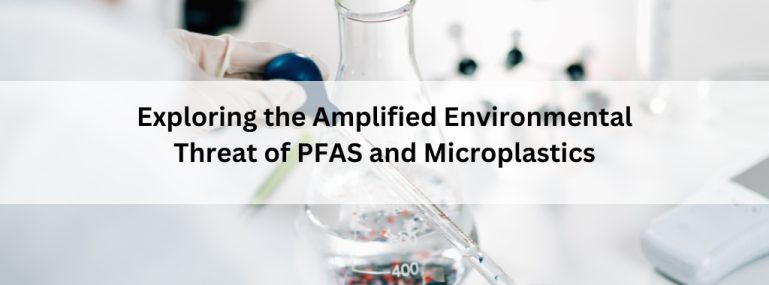Recently, the world has been paying attention to two specific groups of environmental contaminants—PFAS (Per- and Polyfluoroalkyl Substances) and microplastics. Both are known for their detrimental effects on the environment, their global distribution, and their potential for bioaccumulation or biomagnification. However, new findings suggest a worrying synergy: when these contaminants come into contact, the effects may worsen, adding an additional dimension of threats to the environment and human health.
PFAS are synthetic chemicals found in a wide variety of industries and applications, including non-stick cookware and fire extinguishing foam. Often referred to as “forever chemicals,” PFAS are not biodegradable in the environment and accumulate in living organisms over time.
Microplastics are tiny plastic particles resulting from the breakdown of larger plastic items or directly manufactured for use in products like cosmetics. These particles infiltrate virtually every part of the planet, from the deepest oceans to human bloodstreams, and are known to cause physical and chemical harm to organisms that ingest them.
The Synergistic Threat
When PFAS and microplastics occur together, the risks are multiplied. Here’s why:
- PFAS Deposition on Microplastics: Microplastics act as transporters of PFAS in aquatic and terrestrial environments. PFAS molecules are attracted to the surface of the microplastics, effectively creating a “rider.” This binding makes it easier for PFAS to travel long distances, enter the food chain, and accumulate in the ecosystem.
- Increased Bioavailability: The combination of PFAS and microplastics increases the biological effect of these toxins. When marine animals consume PFAS-containing microplastics, they are exposed not only to the physical damage caused by the plastic but also to the chemical toxicity of the associated PFAS compounds.
- Increased Toxicity: Studies show that PFAS-coated microplastics are more toxic than pollution alone. Microplastic particles act as sources of PFAS in biological systems and intensify their effects. In addition, the plastic itself can release harmful additives, further increasing health risks.
- Environmental Complexity: Both PFAS and microplastics are persistent in the environment. Their ecological integration creates a long-term environmental burden, making mitigation efforts difficult and expensive.
- Implications for Human and Environmental Health: The combined effects of PFAS and microplastics are of particular concern to vulnerable populations, such as children, pregnant women, and communities exposed to contaminated water.
Solutions:
Managing the risks of this dual contamination requires an immediate response on several fronts:
- Policies and Regulations: Stricter regulations on PFAS production and microplastic pollution should be implemented. Efforts to limit unnecessary exposure to PFAS and reduce single-use plastics are needed.
- Development of Innovations: Research on advanced separation technologies, such as nanomaterials and bioremediation processes, can help eliminate PFAS and microplastics from the environment.
- Changing Public Knowledge and Practices: Consumers need to be educated about the risks of these pollutants to encourage sustainable practices, such as reducing the use of plastics and supporting PFAS-free products.
- Collaborative Change: More research is needed to understand the mechanisms of interaction between PFAS and microplastics and to develop effective mitigation strategies.
The growing threat of PFAS and microplastics requires urgent action. ComplianceXL plays a crucial role in helping businesses navigate the complex regulations around harmful substances like PFAS, ensuring compliance with standards such as REACH, RoHS, and TSCA. By leveraging ComplianceXL’ s expertise, organizations can reduce environmental risks, adopt sustainable practices, and protect both ecosystems and human health, all while maintaining regulatory compliance.
FAQs:
1.What are microplastics?
Microplastics are tiny plastic particles. Some are designed to be small, often used in the beauty industry.
2.How do microplastics and PFAS affect the environment?
Microplastics absorb PFAS substances and carry them over long distances. When aquatic organisms consume these tiny plastics or microplastics with PFAS, it acts as poison and harms them.





